There is a very good book that was written by the Dutch Cartridge Collectors club on the whole history of the 6.5×53.5R M.95 Mannlicher. This piece is not intended to reinvent that wheel, or reproduce the full 62 page booklet, but to merely give an overview of the cartridges and different variations in my collection. There was also a discussion on the IAA Forum regarding the Dutch and Romanian headstamps which is well worth the read. (with thanks to Alex and treshkin)
As can be seen in the intro to the 6.5×52 Carcano, the 1880’s saw two major developments, namely the move from single shot to repeating rifles and the introduction of smokeless powder. This led to a mini ‘arms race’ in Europe. As a result of research done by Italy, most countries in Europe adopted some version with a 6.5mm bullet with a 50+mm case, either rimmed or rimless. The Dutch followed this trend in 1895 and replaced their single shot 11mm Beaumont rifle with the 6.5×53.5R M.95 Mannlicher.
The 6.5×53.5R M.95 Mannlicher was used by the Dutch army as well as the Royal Navy and the army of the Dutch East Indies. Both the Dutch Army and the East Indies army used a different numbered nomenclature, with the Dutch using an uneven number for Ball rounds and an even number for Blanks and the East Indies army used a different numbering series for Ball and Blank, but both started with a 1, while the Navy used abbreviations rather than a numbering system. It is also noted that not all the numbers were used, as some were utilised on cartridges other than the 6.5mm. The 6.5×53.5R Mannlicher was the standard cartridge for Dutch troops until 1940 in Europe and 1942 in the colonies.
 M1895 Mannlicher
M1895 Mannlicher
The headstamp system on Dutch state arsenal cartridges can be somewhat confusing. Cases were originally marked with the last two years of production at the 12 o’clock position and a code letter for the brass lot at the 6 o’clock position. This continued from 1920 onward for shooting stock. If cartridges were to be stored, they were given additional markings with the last two digits of the year of assembly at the 3 o’clock position and the number of the powder lot used at the 9 o’clock position. Cartridges that were assembled at the Dutch East Indies plants also had the last two years of production and the manufacturers code an additional lot number as well as the last two digits of the production year. These latter marks were sometimes stamped twice and were crossed out as well on other occasions, but it is unclear why this was done.
Fired cases were also recycled and with each reload, a specific mark was added:
– A circle indicated a Ball round;
– A point indicated a blank; and
– A cross indicated a gallery practice round.
Depending on the use, these marks can be found more than once and/or combined. At the end of the service life of a cartridge it was often used as dummy rounds. Some specimens are found with a triangle or a star, but the significance of this is unknown.




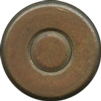

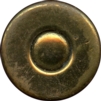

DWM – GERMANY
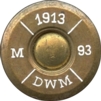

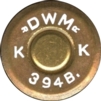
DWM Code 394 is for the ROMANIAN MANNLICHER with thick rim. Code 394B is for the ROMANIAN MANNLICHER
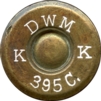
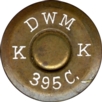

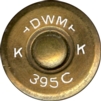
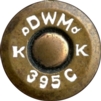


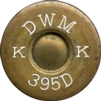
DWM Code 395C is for the DUTCH COMMERCIAL headstamp. DWM Code 395D is for the DUTCH MG/RIFLE






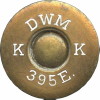
 DWM Code 395E is for the DUTCH “S” bullet (Cupro-Nickel Clad Steel)
DWM Code 395E is for the DUTCH “S” bullet (Cupro-Nickel Clad Steel)






GERMANY – RWS

AUSTRIA – GEORG ROTH
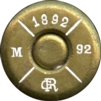

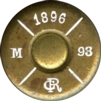

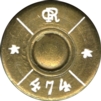

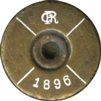

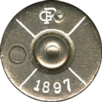

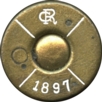

The first specimen is known as a Dummy cartridge M.08, 18 and 20 and was adopted in 1908 and remained in use until 1924. The outward appearance is similar to the standard ball cartridge, but the whole case was nickeled. The charge consisted of sand and it had a struck primer. The second specimen is called the Ball cartridge No. 7 or ‘MARGA’ (after the Belgian inventor) and was adopted in 1900 for gallery practice. The ‘bullet’ is made of cellulodine which is a mixture of celluloid and graphite. On both the specimens can be seen the circle stamp, meaning that it was once reloaded as a ball round, and also a punch mark, meaning it was then reloaded as a blank.



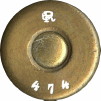



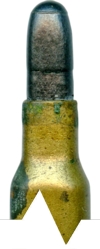

AUSTRIA – HIRTENBERG


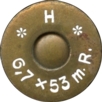



AUSTRIA – OSTERREICH JAGDPATRONEN FABRIK, KRAMSACH, TIROL.
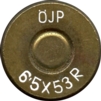

PORTUGAL
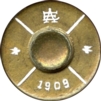
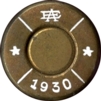

AUSTRIA – KELLER & CO.

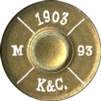


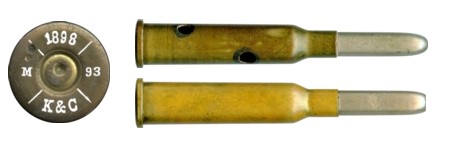




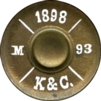
 Sectioned tip – see above. This is most likely an observation cartridge.
Sectioned tip – see above. This is most likely an observation cartridge.
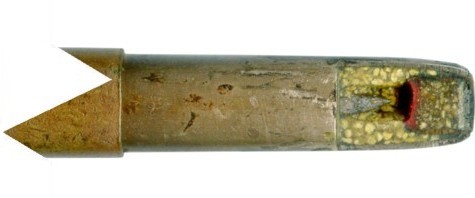
Close up of the observation cartridge. These were in all probabilty used against the shielding of machine guns or artillery pieces to indicate the strike.
CZECHOSLOVAKIA


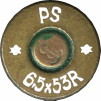
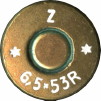
ENGLAND
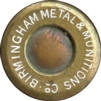

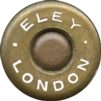
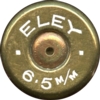
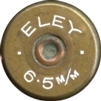
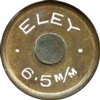
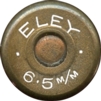


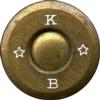
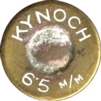
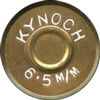
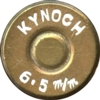
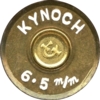

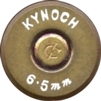







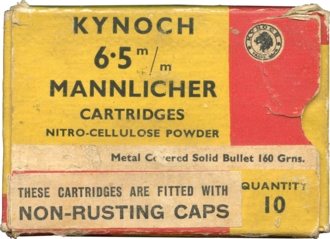
FRANCE
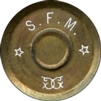

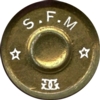

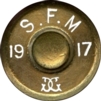

GERMANY – MILITARY OCCUPATION
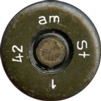

am was the code for Gustloff Werke, Otto Eberhardt – Patronenfabrik, Hirtenberg, Niederdonau that was used under German occupation.
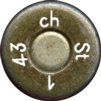

ch was the code for Fabrique Nationale d’armes de guerre S.A., Herstal/Liège (Lüttich), Belgium under German occupation.
HUNGARY – MANFRED WEISS, BUDAPEST
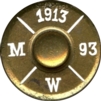
ROMANIA

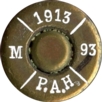
 Pirotechnia Armatei (Pyrotechnical Factory). The meaning of the H is not known, it might be for a specific factory, or likely a lot designation.
Pirotechnia Armatei (Pyrotechnical Factory). The meaning of the H is not known, it might be for a specific factory, or likely a lot designation.
SWITZERLAND
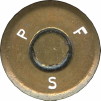
 Patronen Fabrik Solothurn
Patronen Fabrik Solothurn
DUTCH ARSENALS
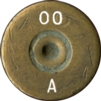
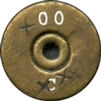

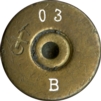
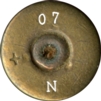

Dummy cartridge for rifles and carbines in use between about 1896 and 1940. Utilised a brass case with a wooden filler stick that was shaped in the form of a bullet and coloured black. According to regulations, these dummies had to be struck with a company letter between 1902 and 1921.
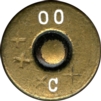





This is the Blank cartridge No.2 that was adopted in 1897 for rifles and carbines. Bullet was painted red.
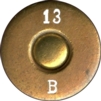

This is the Ball cartridge No.15 that was adopted in 1907 for use in ‘unsafe’ gun ranges or ranges in populated areas. Tip was un-jacketed/hollow point.
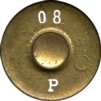
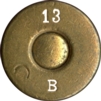

The cartridge with the nickelled top half is usually a GUARD LOAD; however this case was reloaded as a blank.
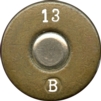

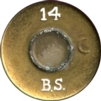

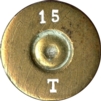
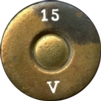
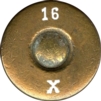
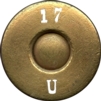
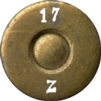
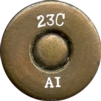
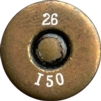
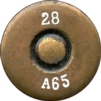


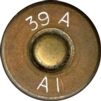

The Ball cartridge No.1 was the standard cartridge used. Normal production was a CNCS bullet, however during the First World War period, because of a scarcity of material; a normal CN bullet was used.
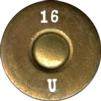



The Guard load or ‘Wachtpatrone’ is similar to the Ball No.1, except for the lighter powder charge, which gives it a shorter range. Used by the police as an anti-riot load and was adopted around 1898. Guard loads are recognised by the fact that the top half is nickelled.
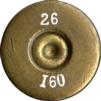

This grooved version is the final version of the Dummy cartridge, M.08, 18 and 20 adopted in 1926. It was loaded with sand, paraffin or resin.
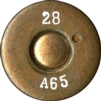

Blank cartridge No. 2


This is the Blank cartridge No.12 that was adopted in 1922 for use in the Lewis Machine gun (M.20). The wooden bullet was orange coloured up to late 1924/early 1925, but was changed to green during 1925. This was as replacement for the Blank cartridge No. 10, that was not successful and declared obsolete in 1924.



This is the Gallery practice round for cartridges No. 13 for use in specially designed rifles. The cartridge No. 13 is a rimfire cartridge, cal. 5.5mm with pointed lead bullet and was adopted in 1900.
From 1920 onwards, cartridges that were to be stored, were given two additional markings on the headstamp, namely the year of assembly at the 3 o’clock position and the number of the powder lot at the 9 o’clock position.


Dummy cartridge M.08, M.18 and M.20 final version with case grooves.
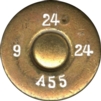

Blank cartridge No. 2 with red coloured, hollow wooden bullet
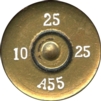

Commemorative cartridge for the Dutch ECRA show 1995
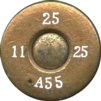

Blank cartridge No. 8. Originally bullets were green coloured, but that was changed in 1920 by uncoloured ones.
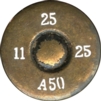

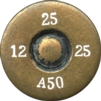


 Two versions of the Ball No. 1 cartridge with two different neck crimps.
Two versions of the Ball No. 1 cartridge with two different neck crimps.
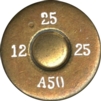


 The triangle on the second specimen is an unknown mark.
The triangle on the second specimen is an unknown mark.


The Ball cartridge No. 15 was adopted in 1907 for use at ‘unsafe’ shooting ranges, for instance in poulated areas.
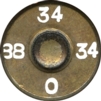
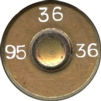

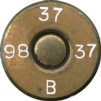

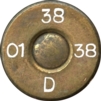



Cartridges of the Colonial Army



This is the Ball cartridge No. 4 that was adopted in 1908. It is a short range cartridge or “wachtpatrone” with reduced charge. Identified by the nickelled case
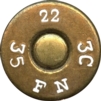
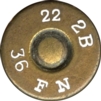
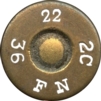

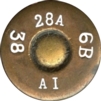
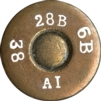
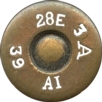
 M1895 Mannlicher for KNIL (Dutch East Indies)
M1895 Mannlicher for KNIL (Dutch East Indies)
USA


SOUTH AFRICA
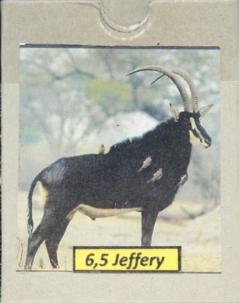
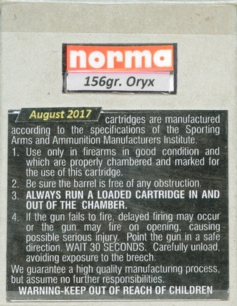
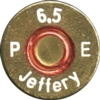

This was a special order for South African hunter Paul Eksteen and cartridges were made by OPM. It is for a Jeffery rifle, hence the headstamp.
